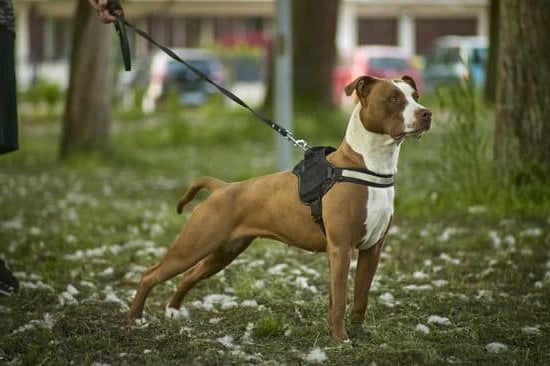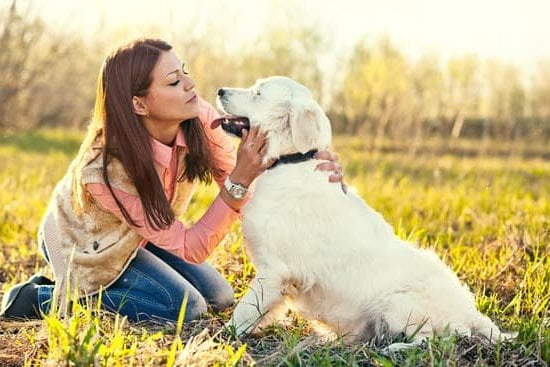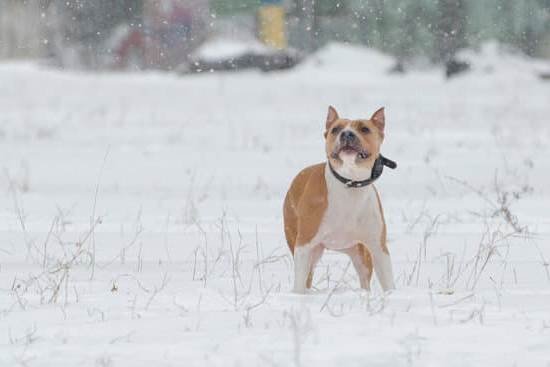Potty training dog is a crucial part of responsible pet ownership. Understanding the importance of potty training for dogs is essential in ensuring a happy and healthy relationship with your furry friend. In this article, we will delve into the significance of potty training, understanding your dog’s behavior and body language, creating a potty training schedule, choosing the right method for your dog’s breed, and providing tips and tricks for successful potty training.
As pet owners, it’s vital to recognize that potty training goes beyond just preventing accidents in the house. It also promotes good hygiene practices, prevents territorial marking, and establishes a routine that can contribute to overall behavioral well-being. A successful potty training experience can lead to a happier, stress-free environment for both you and your pup.
Understanding your dog’s behavior and body language is crucial in effectively potty training them. By recognizing their signals and cues, you can better anticipate when they need to relieve themselves and prevent accidents from happening. This section will cover various behavioral indicators to look out for and how to interpret your dog’s body language when it comes to their bathroom needs.
Understanding Your Dog’s Behavior and Body Language
When it comes to potty training your dog, one of the most important things to understand is their behavior and body language. Dogs communicate in different ways, and by being able to recognize the signs that they need to go potty, you can proactively prevent accidents in the house.
Recognizing Signs of Needing to Go Potty
Dogs often exhibit certain behaviors or cues when they need to go potty. These may include pacing, sniffing around a particular area, whining, barking, or scratching at the door. It’s crucial for pet owners to pay attention to these signals in order to help their dog succeed in potty training.
Establishing a Communication System
Establishing a communication system with your dog can also be beneficial in the potty training process. This can involve teaching your dog specific cues or commands that signal it’s time to go potty, such as ringing a bell hung on the door or using a specific word. By doing so, you are not only encouraging good habits but also strengthening your bond with your furry companion.
Body Language Cues
In addition to behavioral cues, dogs also exhibit certain body language indicators when they need to relieve themselves. They may start circling an area before squatting, or suddenly become restless and agitated. Understanding these subtle cues can help you anticipate when your dog needs to go outside for a bathroom break. By paying close attention and learning your dog’s unique signals, you can set them up for success in their potty training journey.
Creating a Potty Training Schedule
Establishing a Routine
One of the most important aspects of potty training your dog is establishing a consistent schedule. Dogs thrive on routine, so it’s essential to take your dog outside to their designated potty area at the same times every day.
This includes first thing in the morning, after meals, before bedtime, and any time they show signs of needing to go. By providing your dog with a routine, you are helping them learn when and where it is appropriate to relieve themselves.
Monitoring Your Dog’s Behavior
Understanding your dog’s behavior and body language is crucial when creating a potty training schedule. Look for signs such as circling, sniffing the ground, or pacing, as these may indicate that your dog needs to go outside. By paying attention to these cues and immediately taking them outside, you can help reinforce the desired potty behavior.
Potty Training Tools
Incorporating tools such as a consistent leash and collar can also help in implementing a potty training schedule. Using these tools during scheduled potty breaks helps signal to your dog that it’s time for business, not playtime. Additionally, using verbal cues such as “go potty” or “do your business” during these scheduled trips will help reinforce the association between the outing and relieving themselves.
By creating a potty training schedule that aligns with your dog’s natural rhythms and behaviors, you are setting them up for success in learning where and when it is appropriate to relieve themselves. Consistency and patience are key components in this process which will ultimately lead to successful potty training for your furry friend.
Choosing the Right Potty Training Method for Your Dog’s Breed
When it comes to potty training your dog, choosing the right method for their specific breed is crucial for successful training. Different breeds may have different temperaments, energy levels, and physical abilities, which can all play a part in their potty training needs. Here are some tips for choosing the right potty training method for your dog’s breed:
1. Research Your Dog’s Breed: Before you start potty training your dog, take the time to research your dog’s breed. Understand their typical behavior patterns, energy levels, and any breed-specific characteristics that may impact their potty training process.
2. Consider Breed-Specific Needs: Some breeds may require more frequent bathroom breaks due to their size or metabolism. Other breeds may be more independent and stubborn when it comes to training. Take these factors into consideration when choosing a potty training method.
3. Tailor Your Training Approach: Once you understand your dog’s breed-specific needs, tailor your training approach accordingly. For example, if you have a small breed with a fast metabolism, you may need to take them outside for bathroom breaks more frequently. On the other hand, if you have a larger breed with a more independent nature, you may need to use different positive reinforcement techniques to encourage them during potty training.
By understanding your dog’s breed and tailoring your potty training approach to meet their specific needs, you can set yourself up for success in the potty training process. Remember that patience and consistency are key components of effective potty training. With the right approach tailored to your dog’s breed, you can help them successfully master this important skill.
Tips and Tricks for Successful Potty Training
Successfully potty training a dog requires patience, consistency, and understanding of your dog’s behavior. Here are some tips and tricks to help you with the potty training process:
- Establish a routine: Dogs thrive on routine, so establish a consistent schedule for feeding, walking, and potty breaks. This will help your dog understand when it’s time to go outside to do their business.
- Use positive reinforcement: When your dog goes potty in the designated area, praise them and offer treats as a reward. This will reinforce the behavior and encourage them to continue using the designated spot.
- Monitor water intake: Pay attention to when your dog drinks water, especially during potty training. Limiting access to water before bedtime can reduce the likelihood of accidents during the night.
Furthermore, it’s important to be aware of your dog’s body language as they may give signals when they need to go potty. Some common signs include circling, sniffing the ground, or suddenly becoming restless or anxious.
In addition to this, consider using visual cues such as placing a bell by the door that your dog can ring when they need to go outside. Consistency in using these cues will help reinforce the association between going outside and going potty. Remember, every dog is different, so be patient and persistent as you work through the potty training process with your furry friend.
Dealing With Accidents and Setbacks
Potty training a dog can be a challenging process, and accidents are bound to happen. It’s important for dog owners to remain patient and understanding when their furry friend has an accident in the house.
Understanding that setbacks are a normal part of the potty training process is crucial in maintaining a positive mindset. Accidents can occur due to various reasons such as changes in routine, anxiety, or excitement, so it’s important not to get discouraged when they happen.
When accidents do occur, it’s essential to clean up the mess thoroughly to eliminate any lingering odors that could attract the dog back to that spot. Using an enzymatic cleaner designed specifically for pet messes is recommended in order to fully remove any traces of urine or feces. Additionally, it’s important not to scold or punish the dog for having an accident, as this can lead to fear and anxiety around the potty training process.
Incorporating crate training into the potty training process can also be helpful in preventing accidents while indoors. Crates provide a safe and den-like environment for dogs, and they often instinctively avoid soiling their sleeping area. When done correctly, crate training can help dogs learn how to control their bladder and bowels, reducing the likelihood of accidents occurring inside the house.
| Dealing With Accidents | Setbacks |
|---|---|
| Accidents are normal part of potty training | Clean up mess thoroughly |
| Avoid scolding or punishing dog | Incorporate crate training |
Incorporating Positive Reinforcement in Potty Training
Positive reinforcement is an essential aspect of potty training for dogs. It involves rewarding your dog for exhibiting the desired behavior, in this case, going to the bathroom in the designated area. By using positive reinforcement techniques, you can effectively communicate to your dog what is expected of them and encourage them to repeat this behavior in the future.
One effective way to incorporate positive reinforcement in potty training is by using treats or verbal praise. When your dog goes to the bathroom in the designated spot, immediately reward them with a small treat or enthusiastic praise. This will help your dog make a positive association with going potty in the right place and increase the likelihood of them doing so consistently.
It’s important to be consistent with positive reinforcement and only provide the reward immediately after your dog has successfully gone potty in the designated area. Avoid punishing or scolding your dog for accidents, as this can create fear or anxiety around potty training and lead to setbacks in the process.
| Positive Reinforcement Technique | Effectiveness |
|---|---|
| Using treats as rewards | Highly effective for motivating dogs |
| Verbal praise and affection | Effective for reinforcing positive behavior |
| Consistency in rewards | Key to successful positive reinforcement |
By incorporating positive reinforcement techniques into your potty training routine, you can effectively communicate with your dog and make the learning process more enjoyable for both of you. Remember that every dog is different, so be patient and consistent as you work towards achieving success in potty training.
Maintaining Consistency and Patience Throughout the Potty Training Process
Consistency and patience are key components in successful potty training for dogs. Without these, the training process can become frustrating and ineffective. It’s important to remember that every dog is unique, and while some may pick up potty training quickly, others may take longer to grasp the concept. Therefore, it’s crucial for pet owners to maintain consistency in their training methods and exhibit patience throughout the process.
Consistency involves setting a fixed routine for your dog’s potty breaks. This includes feeding them at the same times each day, taking them out for walks or bathroom breaks at consistent intervals, and rewarding them immediately after they successfully eliminate outside. By establishing a consistent schedule, your dog will begin to associate certain times of the day with potty breaks, making it easier for them to understand where and when they should relieve themselves.
In addition to maintaining a consistent schedule, being patient with your dog is equally important. Potty training can be a challenging task, especially for younger puppies who are still learning proper behavior.
It’s crucial not to scold or punish your dog for accidents during the training process as this can create anxiety and fear around potty time. Instead, showing understanding and offering positive reinforcement when they exhibit appropriate bathroom behavior will encourage them to continue their progress in potty training.
By staying consistent with your potty training schedule and remaining patient with your dog’s learning curve, you’ll create a positive environment that promotes successful potty training outcomes for your furry companion. Remember that every small step towards improvement should be celebrated as you work towards achieving a fully potty trained dog.
Conclusion and Celebrating Potty Training Successes
In conclusion, potty training a dog is an essential aspect of responsible pet ownership. By understanding your dog’s behavior and body language, creating a potty training schedule, choosing the right method for your dog’s breed, and incorporating positive reinforcement, you can set your furry friend up for success in the potty training process. It is important to remain patient and consistent throughout the training process, as well as to be prepared for accidents and setbacks.
Celebrating potty training successes is just as crucial as the training itself. When your dog successfully goes potty in the designated area, be sure to praise and reward them to reinforce this positive behavior. Additionally, maintaining consistency in their schedule and reinforcing good habits will help solidify their potty training progress.
While every dog may have its own pace when it comes to potty training, with patience, understanding, and positive reinforcement, you can successfully train your dog. Remember that each milestone they achieve in their potty training journey is worth celebrating. In the end, both you and your pup will benefit from a successful potty training experience.
Frequently Asked Questions
How Long Does It Take for a Dog to Be Potty Trained?
The time it takes to potty train a dog can vary depending on the breed, age, and consistency of training. Generally, it can take anywhere from a few weeks to several months for a dog to be fully potty trained.
How Do You Potty Train a Dog Fast?
To potty train a dog quickly, it’s important to establish a regular feeding schedule and take the dog outside frequently, especially after meals or naps. Positive reinforcement and consistency in training are key to speeding up the process.
How Do You Discipline a Dog for Potty Training?
When disciplining a dog for potty training accidents, it’s crucial to address the behavior immediately, but without resorting to physical punishment. Using a firm “no” and redirecting the dog to the appropriate potty area, along with positive reinforcement for desired behavior, can help reinforce good habits.

Welcome to the blog! I am a professional dog trainer and have been working with dogs for many years. In this blog, I will be discussing various topics related to dog training, including tips, tricks, and advice. I hope you find this information helpful and informative. Thanks for reading!





